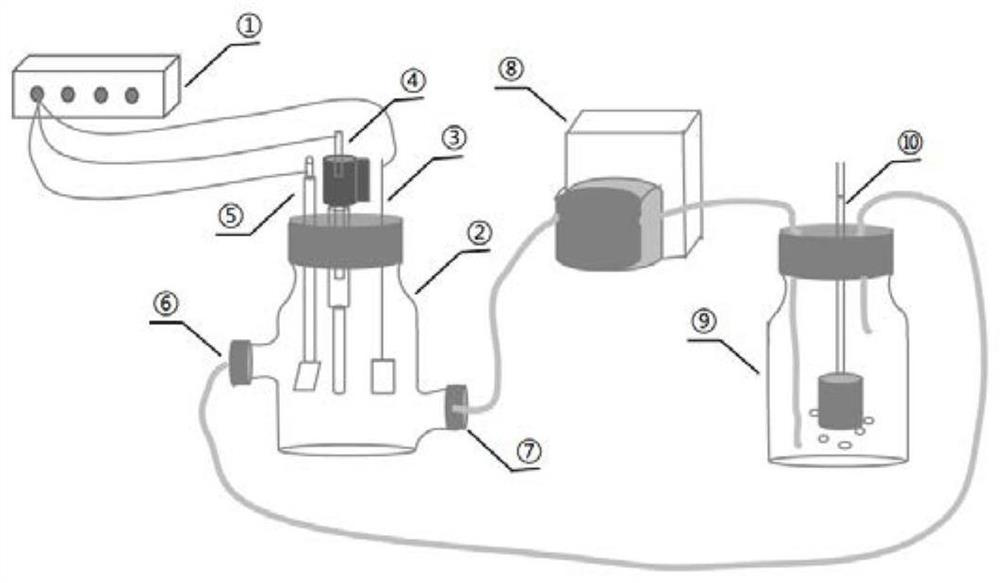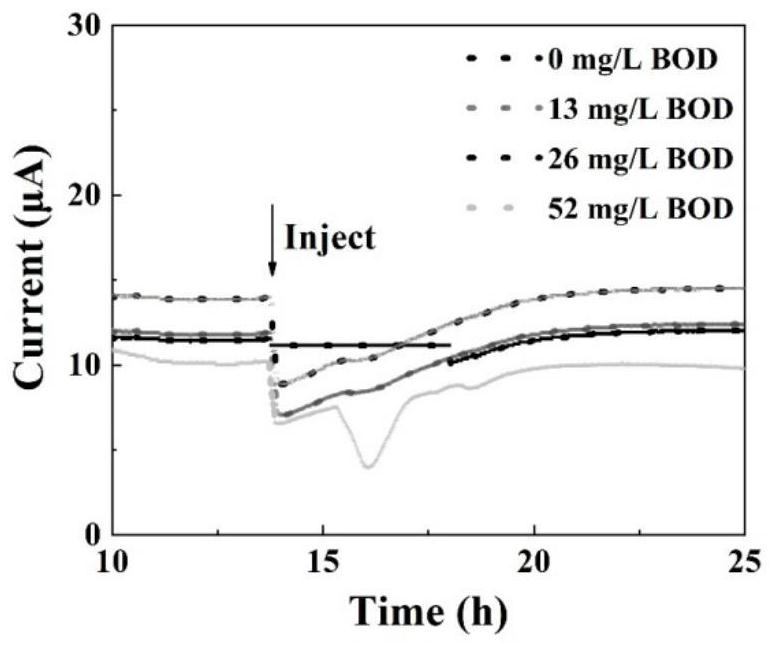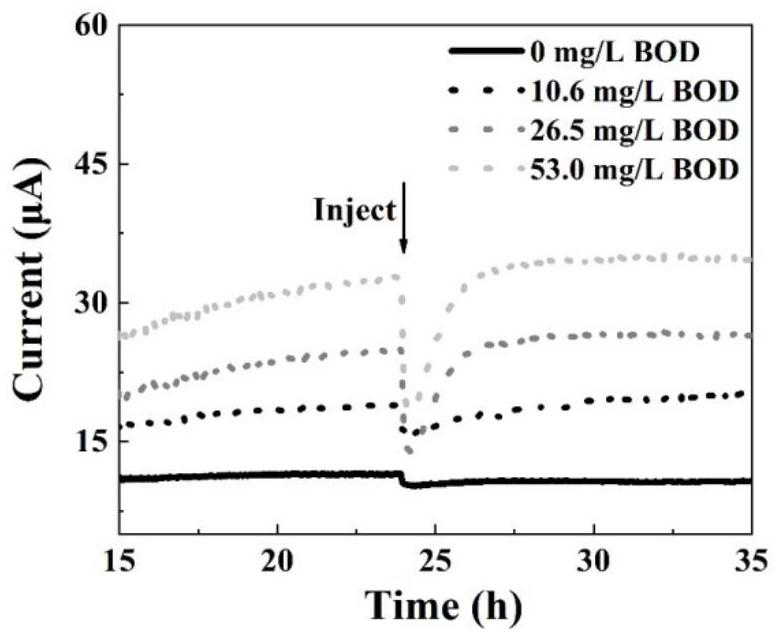Preparation of biological cathode BOD (Biochemical Oxygen Demand) sensing system based on autotrophic and heterotrophic conversion
A sensing system and biocathode technology, applied in measuring devices, material analysis through electromagnetic means, instruments, etc., can solve the problems that restrict the preparation of biocathode sensors, achieve rapid detection and overcome the effect of low sensitivity
- Summary
- Abstract
- Description
- Claims
- Application Information
AI Technical Summary
Problems solved by technology
Method used
Image
Examples
Embodiment example 1
[0027] Example 1: Response of Biocathode BOD Sensor to Glucose
[0028] 1) Construction of biocathode BOD sensor
[0029] Acinetobacter-378 was modified onto the graphite sheet working electrode as mentioned above. The prepared catholyte was added to the MEC reactor and the circulating liquid reserve bottle, and the circulating liquid reserve bottle was continuously aerated to provide inorganic carbon source and electron donor. Start the peristaltic pump and feed the entire system in recirculation mode. The three electrodes are connected to an eight-channel electrochemical system respectively, and the chronoamperometric real-time monitoring of the biofilm is carried out at a constant potential of -0.2V, such as figure 1 shown.
[0030] 2) Response of biocathode BOD sensor to different concentrations of glucose
[0031] When the biocathode BOD sensor reached a stable baseline current for 12 hours, it was tested for the shock response of organic matter. In order to simulate...
Embodiment example 2
[0032] Example 2: Response of biocathode BOD sensor to sodium acetate
[0033] 1) Construction of biocathode BOD sensor
[0034]Acinetobacter-378 was modified onto the graphite sheet working electrode as mentioned above. The prepared catholyte was added to the MEC reactor and the circulating liquid reserve bottle, and the circulating liquid reserve bottle was continuously aerated to provide inorganic carbon source and electron donor. Start the peristaltic pump to circulate the entire system. The three electrodes are connected to an eight-channel electrochemical system respectively, and the chronoamperometric real-time monitoring of the biofilm is carried out at a constant potential of -0.2V, such as figure 1 shown.
[0035] 2) Response of biocathode BOD sensor to different concentrations of sodium acetate
[0036] When the biocathode BOD sensor reached a stable baseline current for 12 hours, it was tested for the shock response of organic matter. In order to simulate the ...
Embodiment 3
[0037] Example 3: Response of biocathode BOD sensor to combined shock of glucose and sodium acetate
[0038] 1) Construction of biocathode BOD sensor
[0039] Acinetobacter-378 was modified onto the graphite sheet working electrode as mentioned above. The prepared catholyte was added to the MEC reactor and the circulating liquid reserve bottle, and the circulating liquid reserve bottle was continuously aerated to provide inorganic carbon source and electron donor. Start the peristaltic pump to circulate the entire system. The three electrodes are connected to an eight-channel electrochemical system respectively, and the chronoamperometric real-time monitoring of the biofilm is carried out at a constant potential of -0.2V, such as figure 1 shown.
[0040] 2) Response of biocathode BOD sensor to the combined shock of different concentrations of glucose and sodium acetate
[0041] When the biocathode BOD sensor reached a stable baseline current for 12 hours, it was subjected ...
PUM
 Login to View More
Login to View More Abstract
Description
Claims
Application Information
 Login to View More
Login to View More - R&D
- Intellectual Property
- Life Sciences
- Materials
- Tech Scout
- Unparalleled Data Quality
- Higher Quality Content
- 60% Fewer Hallucinations
Browse by: Latest US Patents, China's latest patents, Technical Efficacy Thesaurus, Application Domain, Technology Topic, Popular Technical Reports.
© 2025 PatSnap. All rights reserved.Legal|Privacy policy|Modern Slavery Act Transparency Statement|Sitemap|About US| Contact US: help@patsnap.com



